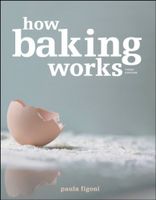Label
All
0
Clear all filters
🔥 Try our grilling cookbooks and save 25% on ckbk membership with code BBQ25 🔥
2. Gases Form and Expand.
Appears in
By Paula Figoni
Published 2003
The three most important leavening gases in baked goods are air, steam, and carbon dioxide. Heat from the oven affects these leavening gases in several ways. For example, heat causes water to vaporize into steam. Heat also increases the rate of fermentation in yeast-raised baked goods, so that carbon dioxide gas and alcohol are generated at a faster rate, at least until the yeast dies. Finally, heat helps to dissolve slow-acting baking powders to activate them. Once activated, baking powders release carbon dioxide into the liquid portion of the batter or dough. Depending on the formulation of the baking powder, this may start at room temperature and continue until the temperature reaches 170°F (75°C) or above.
Become a Premium Member to access this page
Unlimited, ad-free access to hundreds of the world’s best cookbooks
Over 160,000 recipes with thousands more added every month
Recommended by leading chefs and food writers
Powerful search filters to match your tastes
Create collections and add reviews or private notes to any recipe
Swipe to browse each cookbook from cover-to-cover
Manage your subscription via the My Membership page
Best value
Part of
Advertisement
Advertisement
The licensor does not allow printing of this title


